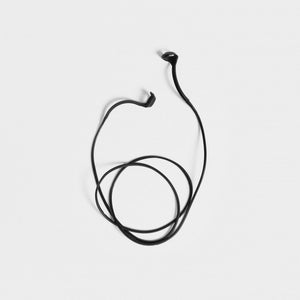
Music, Moto, Kids, Reusable
⛄ Winter deal: 10% off with code LIVETOTHEMAX - Free delivery from €29 🚚

Noise pollution can be considered an integral part of your daily life. It has been scientifically proven to affect the overall population. A lot of people suffer from an increased sensitivity to background noise nowadays. This ultimately means that they can barely stand listening to high-level sounds. But which solutions can be put forward to help them? Wearing noise-reducing earplugs is one of the best known solutions while also being inexpensive.
Do you suffer from earaches when a car honks or when a dog barks for too long? Do you have the impression that you concentrate solely on these very sounds? Beware! You may suffer from an auditory hypersensitivity.
We are not all equals in terms of hearing and some of us appear to be more sensitive than others. This phenomenon is called hyperacusis and implies that certain people have a better hearing than the average population. Thus, they are usually more sensitive to background noise.
Professors Pawel and Margaret Jastreboff have defined this phenomenon as a strong and abnormal reaction within certain people’s auditory canal. The latter would, therefore, be able to hear the sounds in an extensive way in comparison with the rest of the population.
But which solutions can be put forward to reduce their exposition to background noise? Several solutions can be considered such as wearing noise-reducing earplugs, listening to white noise (e.g. natural sounds, such as flowing water or singing birds) in order to cover the background noise or soundproofing.
We all enjoy a wealth of hearing that constantly needs to be cared of. For this very reason, it is important to voluntarily reduce the amount of time we spend surrounded by heavy sounds, especially when the latter exceed 100 decibels (e.g. clubbing or playing music).
One of the possible solutions is to protect our hearing by wearing noise-reducing earplugs. Their aim is to reduce the intensity of the sounds which travel into our ears.
A lot of people have emphasised the helpfulness of wearing earplugs. For example, one student explained why he started wearing earplugs: his roommate tended to play music during the night preventing him from sleeping. Thus, he decided to start wearing earplugs when sleeping and then got used to wearing them when exposed to heavy sounds.
We can distinguish between three types of earplugs, which all respond to different needs: elastomer earplugs, wax earplugs and foam earplugs.
The wax earplugs, need to be kneaded before being put inside the ears. They enable to reduce the noise pollution by 27 decibels.
The foam earplugs have the tendency to dilate more as well as to adjust to the morphology of our auditory canal. They are typically called “noise-reducing”, as they act as a true shield against noise pollution.
The elastomer earplugs are usually preshaped and are used either by swimmers to protect their ears from water, or by both musicians and festival-goers. The latter tend to use them when they are equipped with an acoustic filter, as it enables to reproduce the original sounds and therefore to enjoy the quality of music.
All these earplugs can be found in various shops, such as at chemists, and are relatively inexpensive.
In this article, you have learned that:
Hyperacusis corresponds to the fact that certain people hear more sounds than the average population and have an increased sensitivity to background noise;
One of the proposed solutions is to protect our ears by wearing noise-reducing earplugs;
There are three different types of earplugs: the elastomer earplugs, the wax earplugs and the foam earplugs.